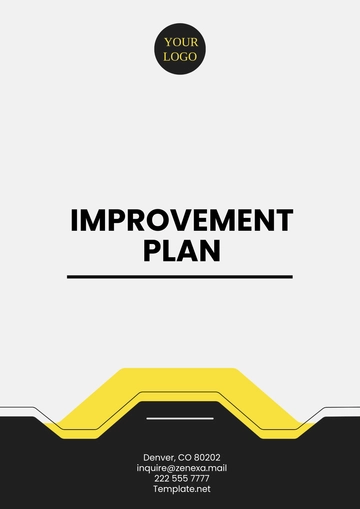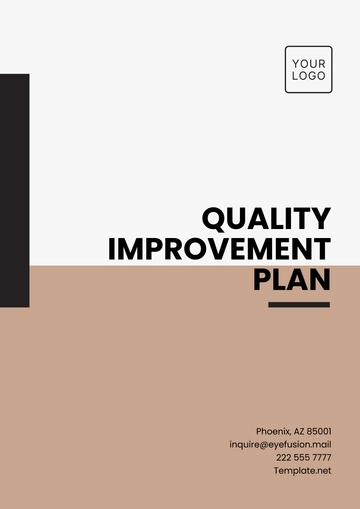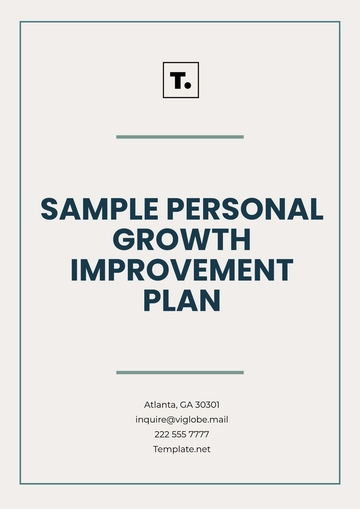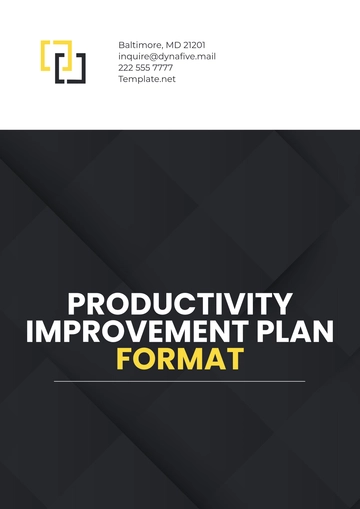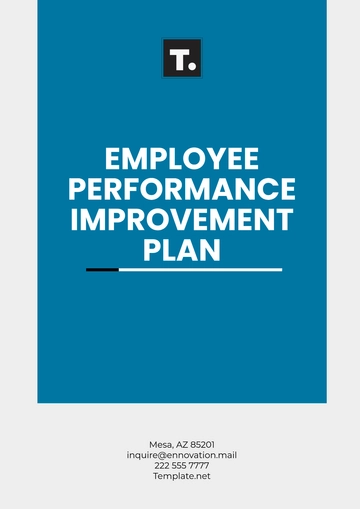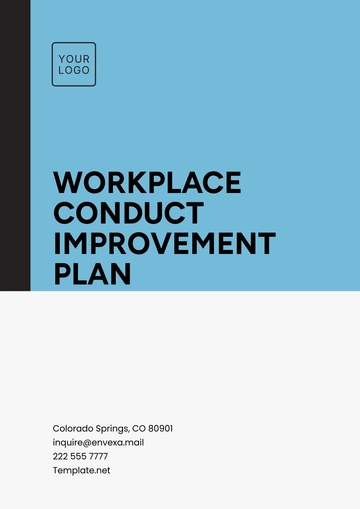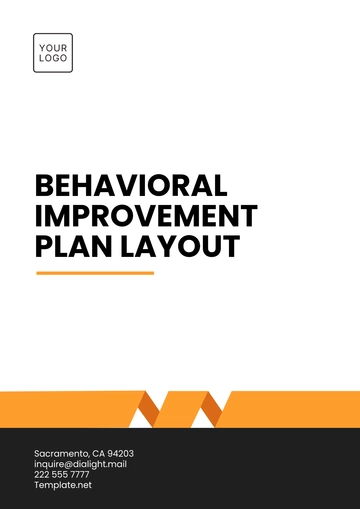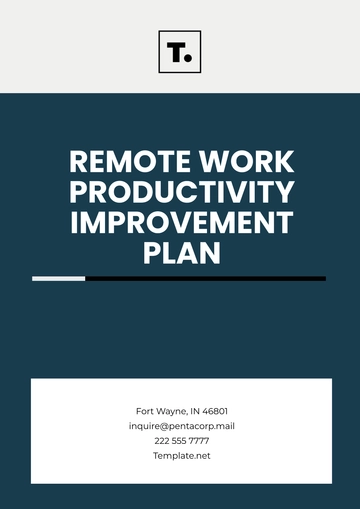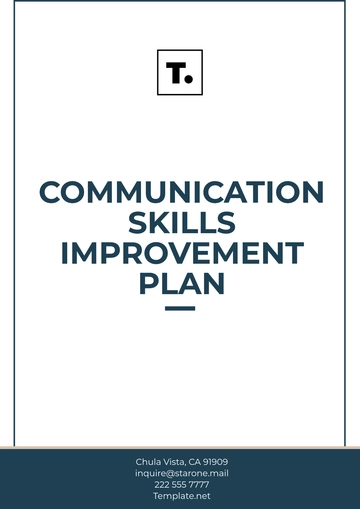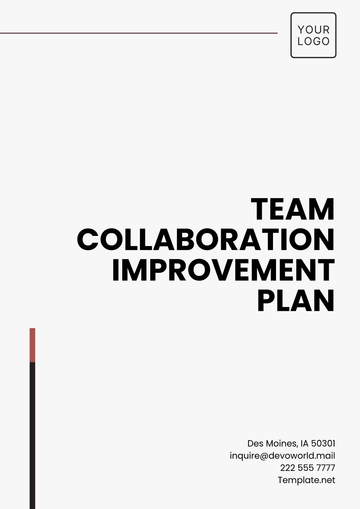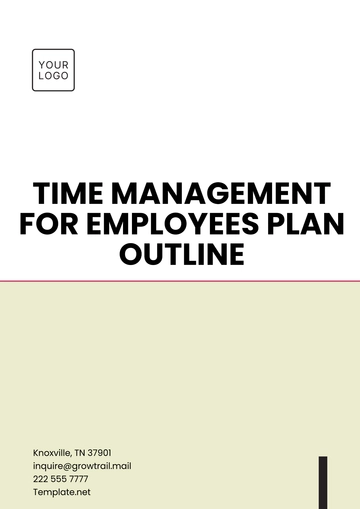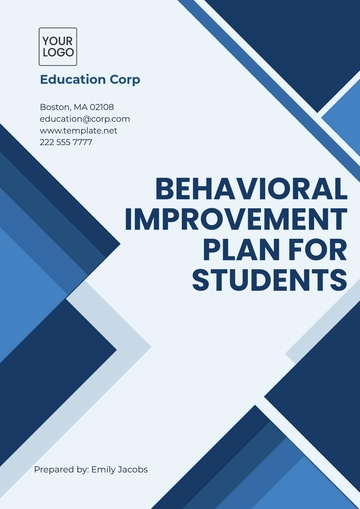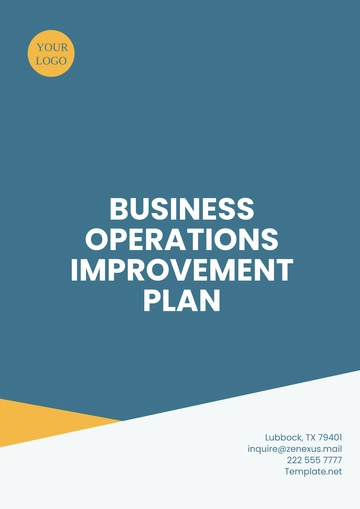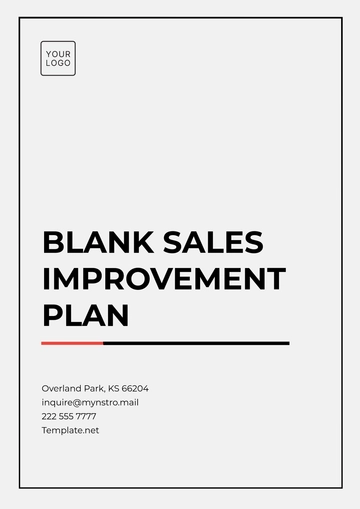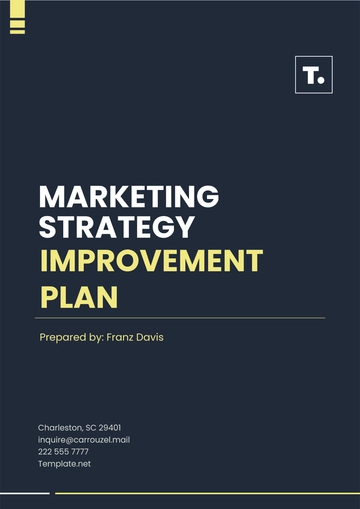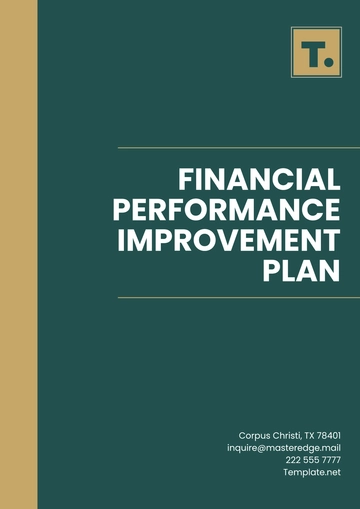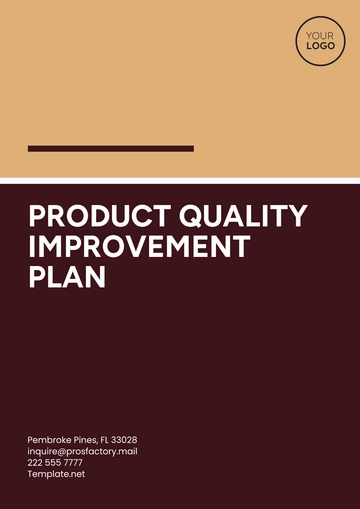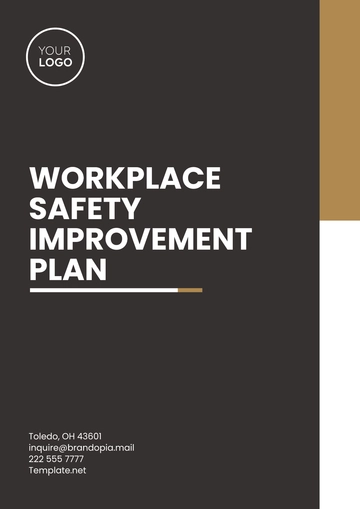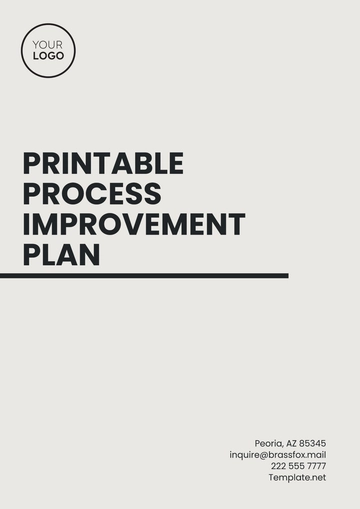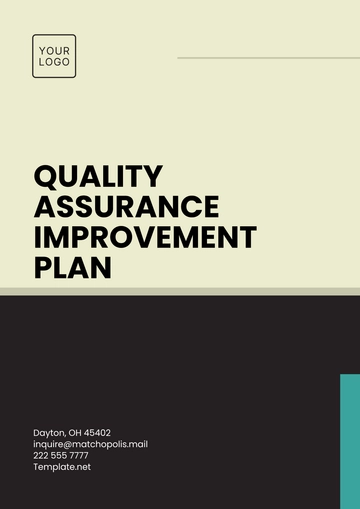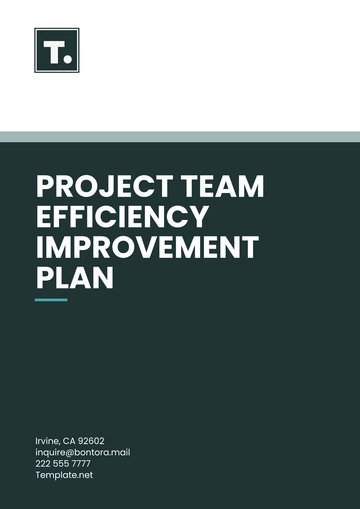Free Agriculture Equipment Upgrade Plan
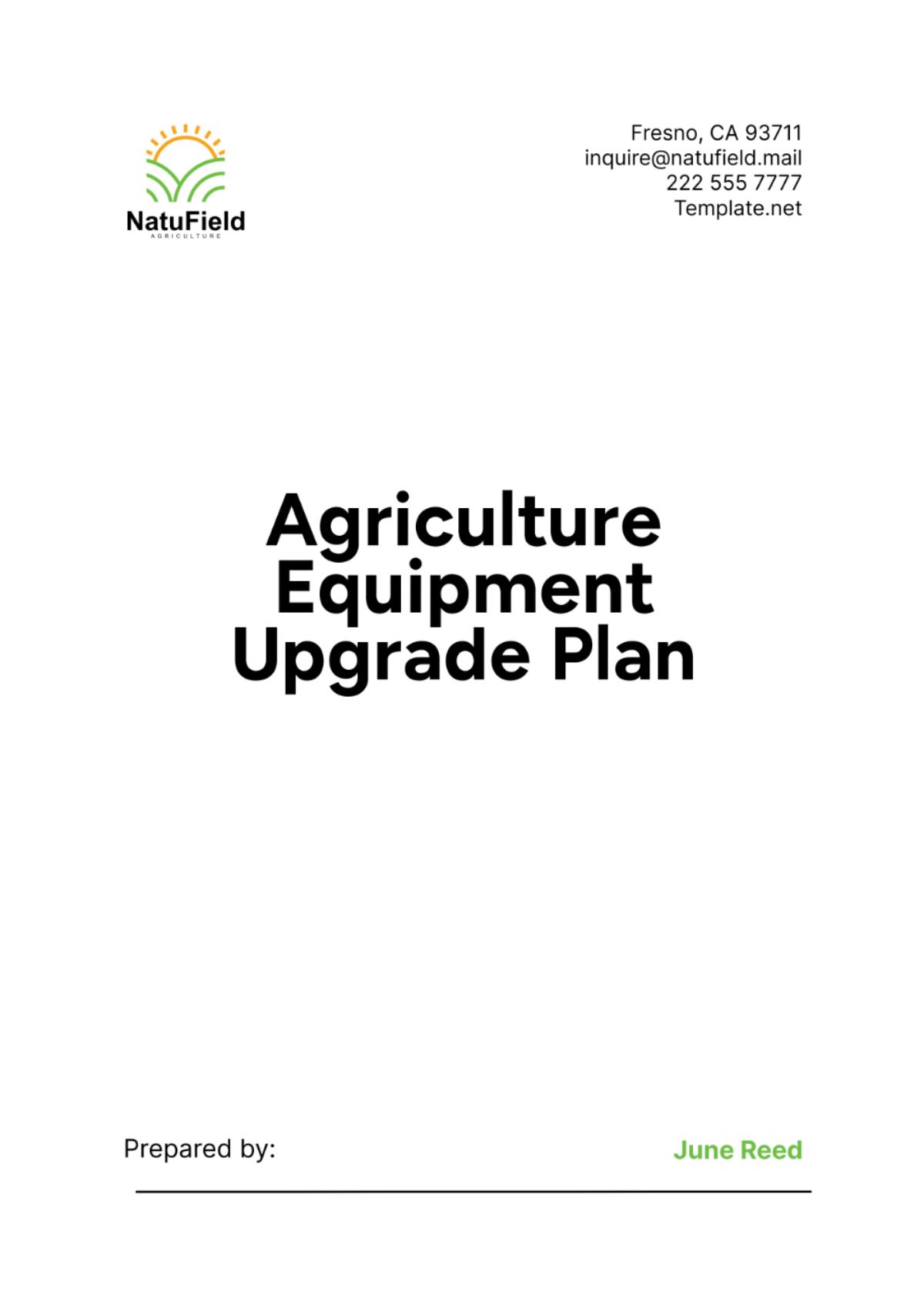
I. Executive Summary
The Agriculture Equipment Upgrade Plan outlines a strategic initiative by [Your Company Name] to enhance operational efficiency and sustainability through the modernization of our machinery fleet. Our primary goal is to replace outdated equipment with state-of-the-art models that offer improved reliability and performance. By doing so, we aim to minimize downtime, optimize resource utilization, and reduce maintenance costs significantly.
Furthermore, this plan prioritizes the adoption of advanced technologies that align with our commitment to sustainable farming practices. These technologies not only enhance productivity but also contribute to environmental stewardship by minimizing carbon footprint and promoting resource conservation. Through careful financial planning and phased implementation, we anticipate achieving these objectives while maintaining cost-efficiency and profitability.
Therefore, the Agriculture Equipment Upgrade Plan underscores [Your Company Name]'s dedication to innovation and sustainability in agriculture. By investing in modern equipment and embracing cutting-edge technologies, we aim to position ourselves as industry leaders while ensuring long-term viability and growth. This strategic approach not only supports our operational goals but also reinforces our commitment to environmental responsibility and customer satisfaction.
A. Objectives
Modernize the Machinery Fleet:
Our primary objective is to replace outdated machinery with state-of-the-art equipment that enhances operational efficiency and reliability. By upgrading our fleet, we aim to reduce downtime associated with equipment failures and improve overall productivity throughout the farming cycle. This modernization effort will also enable us to leverage technological advancements in agriculture, such as precision farming and automated processes, to stay competitive in the industry.
Reduce Operational Downtime and Maintenance Costs:
One of our key goals is to minimize operational disruptions caused by equipment breakdowns. By investing in new machinery known for its reliability and durability, we anticipate significant reductions in downtime during critical farming seasons. Additionally, optimizing our maintenance protocols and adopting proactive servicing strategies will help us lower overall maintenance costs while extending the lifespan of our equipment.
Increase Crop Yields and Ensure Sustainable Farming Practices:
Through the adoption of advanced agricultural technologies, our aim is to maximize crop yields while promoting sustainable farming practices. New equipment will enable us to implement precision farming techniques, such as GPS-guided planting and irrigation management, optimizing resource use and minimizing environmental impact. By prioritizing soil health and water conservation, we aim to ensure long-term productivity and sustainability on our farms.
Improve Safety Standards and Reduce Environmental Impact:
Enhancing safety measures for our workforce is paramount. New equipment will incorporate advanced safety features to protect operators and minimize the risk of accidents. Furthermore, our commitment to environmental stewardship drives us to adopt eco-friendly technologies that reduce carbon emissions and promote environmental sustainability. By implementing these measures, we aim to achieve a balance between operational efficiency and responsible environmental practices.
Position [Your Company Name] as an Industry Leader in Innovative Agricultural Practices:
By investing in cutting-edge equipment and sustainable farming methods, we seek to lead the industry in innovation and best practices. Our proactive approach to technology adoption and environmental responsibility will distinguish us as a forward-thinking organization committed to delivering high-quality products sustainably. This leadership position not only enhances our market competitiveness but also reinforces our reputation as a trusted partner in the agricultural community.
II. Current State Analysis
This section provides a comprehensive assessment of [Your Company Name]'s current agricultural machinery, operational efficiency metrics, and environmental impact. Insights reveal opportunities to enhance equipment reliability, increase crop yields sustainably, and reduce environmental footprint, guiding strategic initiatives in the Agriculture Equipment Upgrade Plan.
A. Machinery Inventory
Equipment Type | Condition | Age | Maintenance History |
|---|---|---|---|
Tractors | Good | 5 years | Regular maintenance; recent engine overhaul. Tractors are in good condition with recent upgrades, ensuring reliability during peak seasons. |
Harvesters | Fair | 8 years | Scheduled maintenance; minor repairs. Harvesters have aged but are maintained adequately, with minor repairs addressing wear and tear issues. |
Irrigation Systems | Excellent | 3 years | Annual servicing; upgraded pumps. Modern irrigation systems are in excellent condition, contributing to efficient water use and crop health. |
Planters | Poor | 10 years | Irregular maintenance; frequent breakdowns. Planters are in poor condition, requiring frequent repairs and affecting planting schedules and efficiency. |
Upgrading the planters should be prioritized due to their poor condition and frequent breakdowns, which disrupt planting schedules and efficiency.
B. Operational Efficiency
Metric | Current Value | Target Improvement |
|---|---|---|
Crop Yields (per acre) | 2500 lbs | Increase by 15% |
Maintenance Costs | $50,000 per year | Reduce by 20% |
Downtime (hours per season) | 200 hours | Reduce by 30% |
Targeting a 15% increase in crop yields through equipment upgrades and precision farming techniques will enhance profitability. Reductions in maintenance costs and downtime by 20% and 30%, respectively, will improve operational efficiency significantly.
C. Environmental Impact
Practice | Current Status | Improvement Initiatives |
|---|---|---|
Water Usage | Efficient | Implement drip irrigation systems to further reduce water consumption and optimize usage. |
Waste Management | Recycling in place | Increase recycling rate to 80% by implementing a comprehensive waste management program. |
Emissions | Moderate | Transition to low-emission vehicles and machinery to reduce carbon footprint and improve air quality. |
Enhancing water efficiency and waste recycling can further strengthen environmental sustainability efforts. Transitioning to low-emission equipment aligns with environmental regulations and enhances corporate social responsibility initiatives.
III. Equipment Upgrade Plan
This section details [Your Company Name]'s strategic approach to enhancing agricultural operations through a comprehensive Equipment Upgrade Plan. It outlines meticulous criteria for equipment selection, rigorous procurement processes, and prudent financial planning to maximize efficiency, sustainability, and safety across all operational facets.
A. Equipment Selection Criteria
Criteria | Details |
|---|---|
Advanced Technology Features | Equipment will include GPS guidance systems for precision farming, automated controls for operational efficiency, and advanced sensors for real-time data collection. |
Efficiency and Productivity | New machinery models are selected based on their proven ability to increase productivity by 20% through faster planting and harvesting speeds and reduced fuel consumption. |
Eco-friendly and Sustainable Options | Prioritize machinery with Tier 4 emissions standards, using biodiesel fuels, and incorporating energy-saving technologies like electric engines where feasible. |
Safety Enhancements | Equipment will feature ergonomic designs, improved visibility from operator cabins, and integrated safety systems such as roll-over protection and automatic shut-off mechanisms. |
B. Procurement Process
Steps | Details |
|---|---|
Identifying and Evaluating Suppliers | Research includes reviewing supplier credentials, conducting site visits, and assessing customer feedback to ensure reliability and service responsiveness. |
Requesting Proposals and Quotes | Detailed RFQs specify equipment specifications, delivery timelines, warranties, and after-sales support requirements to solicit comprehensive proposals. |
Negotiating Contracts | Contract negotiations focus on pricing adjustments, extended warranty terms, service level agreements, and provisions for equipment upgrades. |
Purchasing Approval and Implementation | Approval involves cross-functional review by finance, operations, and legal teams to finalize agreements and schedule equipment delivery and installation. |
C. Financing and Budgeting
This section explains the financial planning and budgeting for the equipment upgrade.
Aspect | Details |
|---|---|
Financial Planning | Total project costs encompass equipment procurement, installation expenses, training for staff, and contingency funds for unforeseen expenses. |
Budget Allocation | Funds are allocated from operating budgets, with additional financing sought through equipment leasing or bank loans with competitive interest rates. |
Cost Management | Rigorous cost controls are implemented through regular budget reviews, vendor payment schedules, and tracking against predefined milestones to mitigate overspending risks. |
This structured Equipment Upgrade Plan ensures [Your Company Name] effectively integrates advanced technology, sustainability practices, and stringent safety measures into its operations, fostering enhanced productivity and operational resilience in the agricultural sector.
IV. Implementation Plan
This section outlines [Your Company Name]'s meticulous strategy for implementing the Agriculture Equipment Upgrade Plan. It details phased timelines for equipment acquisition, roles and responsibilities of key teams, and comprehensive training programs. This structured approach aims to ensure seamless integration, operational efficiency, and staff readiness across all facets of the upgrade process.
A. Timeline
Proposed schedule for upgrading the machinery.
Phase | Timeline | Details |
|---|---|---|
Phase 1: Planning | Month 1 | Conduct detailed needs assessment and finalize project scope and objectives. |
Phase 2: Equipment Selection | Months 2-3 | Evaluate equipment options based on criteria such as technology features, efficiency, and sustainability. |
Phase 3: Procurement | Months 4-5 | Issue RFQs, evaluate proposals, negotiate contracts, and finalize procurement agreements. |
Phase 4: Installation | Months 6-7 | Schedule equipment delivery and installation, ensuring compliance with safety and operational standards. |
Phase 5: Testing and Adjustment | Month 8 | Conduct performance tests, adjust equipment settings, and address any operational issues identified during testing. |
Phase 6: Training | Month 9 | Implement training programs for staff on equipment operation, maintenance, and safety protocols. |
Phase 7: Full Deployment | Month 10 | Fully integrate new equipment into daily operations and monitor initial performance and productivity gains. |
B. Roles and Responsibilities
Role | Responsibilities |
|---|---|
Project Manager | Coordinate project activities, manage resources, and ensure project milestones are met on schedule. |
Procurement Team | Research suppliers, evaluate proposals, negotiate contracts, and oversee equipment procurement. |
Technical Support and Maintenance Team | Coordinate installation, conduct equipment testing, and provide ongoing technical support and maintenance. |
Farm Operations Team | Prepare site for installation, oversee equipment integration, and manage day-to-day operations during transition. |
C. Training and Development
Training programs for staff to operate and maintain the new equipment.
Training Program | Details |
|---|---|
Equipment Operation Training | Hands-on training sessions covering equipment controls, operational procedures, and troubleshooting techniques. |
Maintenance Procedures Training | Instruction on routine maintenance tasks, equipment servicing schedules, and preventive maintenance measures. |
Safety Protocols | Training on safety features, emergency protocols, and compliance with occupational health and safety regulations. |
This comprehensive Implementation Plan ensures a structured approach to upgrading [Your Company Name]'s agricultural equipment, focusing on efficient project execution, clear role delineation, and comprehensive training to optimize operational performance and safety standards.
V. Risk Management
This section outlines [Your Company Name]'s proactive approach to identifying and mitigating risks associated with the Agriculture Equipment Upgrade Plan. By addressing potential challenges such as supply chain delays, technical issues, and cost overruns through strategic mitigation strategies, we ensure seamless project execution and safeguard operational success.
A. Potential Risks
Risk | Details |
|---|---|
Supply Chain Delays | Risks include delays in equipment delivery or shortage of critical components from suppliers, impacting project timelines and operational readiness. Mitigation involves diversifying suppliers, establishing clear communication channels, and maintaining alternative procurement options to minimize disruptions. |
Technical Issues with New Equipment | Potential challenges may arise during installation, integration, or initial operation of new machinery, affecting productivity and efficiency. Strategies include thorough testing and validation before full deployment, leveraging manufacturer support for technical expertise, and training staff to troubleshoot common issues. |
Cost Overruns | Risks of exceeding allocated budgets due to unforeseen expenses such as inflationary pressures, fluctuating material costs, or underestimation of project scope. Mitigation strategies focus on rigorous budget planning with contingency reserves, conducting regular cost assessments, and negotiating fixed-price contracts with suppliers to manage financial risks effectively. |
B. Mitigation Strategies
Strategy | Details |
|---|---|
Developing Contingency Plans | Create detailed contingency plans outlining alternative actions for addressing supply chain disruptions, technical failures, or budget overruns. Regularly update and refine these plans based on ongoing risk assessments and feedback from project stakeholders. |
Maintaining a Buffer Budget | Allocate additional funds within the budget to account for unexpected costs or market fluctuations that may impact project expenses. Establish clear guidelines for budget utilization and ensure transparency in financial reporting to mitigate risks associated with cost overruns. |
Regular Progress Reviews and Adjustments | Conduct frequent progress reviews to monitor key project metrics, identify potential risks early, and implement timely adjustments to schedules, resource allocations, and mitigation strategies. Maintain open communication channels among project teams and stakeholders to facilitate proactive decision-making and risk management throughout the project lifecycle. |
This Risk Management framework ensures [Your Company Name] identifies potential challenges in the Agriculture Equipment Upgrade Plan and implements proactive strategies to mitigate risks effectively, safeguarding project timelines and financial objectives.
VI. Monitoring and Evaluation
This section outlines [Your Company Name]'s systematic approach to monitoring and evaluating the performance of upgraded agricultural machinery. It focuses on key metrics such as crop yield improvements, reduced downtime, and enhanced efficiency. Regular review meetings and annual audits ensure continuous optimization and operational excellence in farming practices.
A. Performance Metrics
Metric | Details |
|---|---|
Crop Yield Improvements | Measure increases in crop yields per acre compared to pre-upgrade benchmarks. |
Reduction in Downtime and Maintenance Costs | Track reductions in equipment downtime hours and associated maintenance expenditures. |
Efficiency and Productivity Gains | Evaluate improvements in operational efficiency and productivity metrics, such as planting and harvesting speeds. |
B. Review Meetings
Meeting Type | Details |
|---|---|
Quarterly Performance Reviews | Assess machinery performance against set metrics, identify challenges, and adjust strategies as necessary. |
Annual Machinery Audits | Conduct comprehensive audits to review overall equipment condition, maintenance practices, and long-term performance trends. |
This Monitoring and Evaluation framework ensures [Your Company Name] effectively tracks and assesses the performance of upgraded agricultural machinery, enabling proactive adjustments and continuous improvement in operational efficiency and crop yield optimization.
VII. Budget Overview
This section provides a detailed budget plan for the upgrade, including cost estimations and allocations.
Category | Estimated Cost |
|---|---|
Procurement of New Equipment | $500,000 |
Training and Development | $50,000 |
Maintenance and Support | $30,000 |
Contingency Fund | $70,000 |
Total | $650,000 |
VIII. Conclusion
The Agriculture Equipment Upgrade Plan represents a pivotal investment for [Your Company Name], strategically positioned to elevate productivity and operational efficiency. By integrating advanced machinery, the plan aims to minimize operational downtime, optimize resource utilization, and enhance overall crop yield. Embracing sustainable farming practices not only aligns with environmental stewardship but also fortifies our commitment to long-term profitability and leadership within the agricultural sector.
This initiative underscores [Your Company Name]'s proactive approach to innovation and sustainability, fostering resilience and competitiveness in a dynamic market landscape. With a focus on efficiency gains and sustainable growth, we anticipate substantial improvements in operational metrics and customer satisfaction. The Agriculture Equipment Upgrade Plan stands as a cornerstone for our continued success, driving transformative impact across our operations while setting new benchmarks for industry standards.
Thus, [Your Company Name] remains steadfast in its commitment to operational excellence and sustainable growth. Through the Agriculture Equipment Upgrade Plan, we are poised to achieve significant milestones, reinforcing our position as a leader in agricultural innovation. This strategic initiative not only enhances our capabilities but also underscores our dedication to delivering superior value to stakeholders and ensuring a sustainable future for generations to come.
- 100% Customizable, free editor
- Access 1 Million+ Templates, photo’s & graphics
- Download or share as a template
- Click and replace photos, graphics, text, backgrounds
- Resize, crop, AI write & more
- Access advanced editor
Elevate your agricultural operations with the Agriculture Equipment Upgrade Plan Template from Template.net. This fully customizable and editable template streamlines your upgrade planning. Editable in our AI Editor Tool, it ensures precision and ease. Enhance efficiency, save time, and stay ahead in the competitive market. Get started now and transform your farming business with professional-grade tools!
You may also like
- Finance Plan
- Construction Plan
- Sales Plan
- Development Plan
- Career Plan
- Budget Plan
- HR Plan
- Education Plan
- Transition Plan
- Work Plan
- Training Plan
- Communication Plan
- Operation Plan
- Health And Safety Plan
- Strategy Plan
- Professional Development Plan
- Advertising Plan
- Risk Management Plan
- Restaurant Plan
- School Plan
- Nursing Home Patient Care Plan
- Nursing Care Plan
- Plan Event
- Startup Plan
- Social Media Plan
- Staffing Plan
- Annual Plan
- Content Plan
- Payment Plan
- Implementation Plan
- Hotel Plan
- Workout Plan
- Accounting Plan
- Campaign Plan
- Essay Plan
- 30 60 90 Day Plan
- Research Plan
- Recruitment Plan
- 90 Day Plan
- Quarterly Plan
- Emergency Plan
- 5 Year Plan
- Gym Plan
- Personal Plan
- IT and Software Plan
- Treatment Plan
- Real Estate Plan
- Law Firm Plan
- Healthcare Plan
- Improvement Plan
- Media Plan
- 5 Year Business Plan
- Learning Plan
- Marketing Campaign Plan
- Travel Agency Plan
- Cleaning Services Plan
- Interior Design Plan
- Performance Plan
- PR Plan
- Birth Plan
- Life Plan
- SEO Plan
- Disaster Recovery Plan
- Continuity Plan
- Launch Plan
- Legal Plan
- Behavior Plan
- Performance Improvement Plan
- Salon Plan
- Security Plan
- Security Management Plan
- Employee Development Plan
- Quality Plan
- Service Improvement Plan
- Growth Plan
- Incident Response Plan
- Basketball Plan
- Emergency Action Plan
- Product Launch Plan
- Spa Plan
- Employee Training Plan
- Data Analysis Plan
- Employee Action Plan
- Territory Plan
- Audit Plan
- Classroom Plan
- Activity Plan
- Parenting Plan
- Care Plan
- Project Execution Plan
- Exercise Plan
- Internship Plan
- Software Development Plan
- Continuous Improvement Plan
- Leave Plan
- 90 Day Sales Plan
- Advertising Agency Plan
- Employee Transition Plan
- Smart Action Plan
- Workplace Safety Plan
- Behavior Change Plan
- Contingency Plan
- Continuity of Operations Plan
- Health Plan
- Quality Control Plan
- Self Plan
- Sports Development Plan
- Change Management Plan
- Ecommerce Plan
- Personal Financial Plan
- Process Improvement Plan
- 30-60-90 Day Sales Plan
- Crisis Management Plan
- Engagement Plan
- Execution Plan
- Pandemic Plan
- Quality Assurance Plan
- Service Continuity Plan
- Agile Project Plan
- Fundraising Plan
- Job Transition Plan
- Asset Maintenance Plan
- Maintenance Plan
- Software Test Plan
- Staff Training and Development Plan
- 3 Year Plan
- Brand Activation Plan
- Release Plan
- Resource Plan
- Risk Mitigation Plan
- Teacher Plan
- 30 60 90 Day Plan for New Manager
- Food Safety Plan
- Food Truck Plan
- Hiring Plan
- Quality Management Plan
- Wellness Plan
- Behavior Intervention Plan
- Bonus Plan
- Investment Plan
- Maternity Leave Plan
- Pandemic Response Plan
- Succession Planning
- Coaching Plan
- Configuration Management Plan
- Remote Work Plan
- Self Care Plan
- Teaching Plan
- 100-Day Plan
- HACCP Plan
- Student Plan
- Sustainability Plan
- 30 60 90 Day Plan for Interview
- Access Plan
- Site Specific Safety Plan
